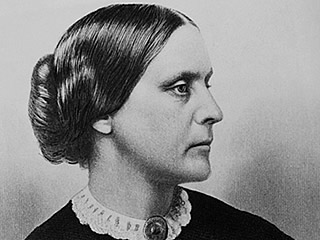I've recently been inspired and driven to write about something that has caught my attention as of late. It's always been present in our world, had its' surges and lulls. Uttered in secrecy, to proclamation in the streets. Given a voice to young and old, both positively and controversially. Has faced acceptance with open arms, to dismissal and rejection. What is this thing, you may ask, that causes such diverse reaction? It is defined by Webster as, "the theory of the political, economic, and social equality of the sexes." Answer? Feminism.
Feminism has definitely faced its ups and downs, even to this day. It especially struggled during its early development in the 19th century. Before this time, women held to the ideas and principles of what is known today as the "Cult of Domesticity" or the "Cult of True Womanhood". The idea of this was that a woman held to four virtues; Piety, Purity, Submissiveness, and Domesticity. To put it generally, a pure, religious mother and housewife. This view was widely accepted until 1848 when opposition began to develop and the Seneca Falls Convention took place. Women such as Elizabeth Cady Stanton and Lucretia Mott, along with other women and men supporters, took the first steps towards women's suffrage.
Lucretia Mott
Anyone reading a School House Rock fan? Cause I am! Be it "I'm Just a Bill" or "Conjunction Junction", but they also had one about women's suffrage, entitled "Sufferin' Until Suffrage", and suffer they did.
They battled opposition and fought for decades for voting equality. Through the 1850's, until 1861 when the Civil War began, and it fell to the side. Shortly after it ended, the 15th Amendment was ratified, classifying that "the right of citizens of the United States to vote, shall not be denied or abridged by the United States or by any state on account of race, color, or previous condition of servitude". "Citizens" here referred to African American men now being allowed to vote.
Susan B. Anthony
This faced both positive and negative reactions from women suffrage advocates. The opposing side included Stanton and Susan B. Anthony. They used this to bring awareness and campaign for universal suffrage, to include women. It became a state by state struggle and process. In western states however, they were far more sympathetic to this cause and states such as Wyoming and Utah had already given women suffrage rights, during the 1870's. By 1920, 14 states, primarily western, had given women the right to vote.
Finally on August 18th, 1920, the 19th Amendment was passed allowing the "Rights of citizens of the United States to vote, shall not be denied or abridged by the United States or by any state on account of sex". Women had won the right to vote and thus ended what is known as the first wave of feminism.
These early stages of Feminism battled for equality with men for voting rights in our country. Feminism has since then evolved into something different then what these ladies fought for. What I plan to do in the following posts, is to go in depth and show that the battle for equality has now become the battle for supremacy. And also touch on the subjects of modern Feminism, male roles in it, and how we've lost the true meaning of real manhood, and womanhood. Thank you for reading.



